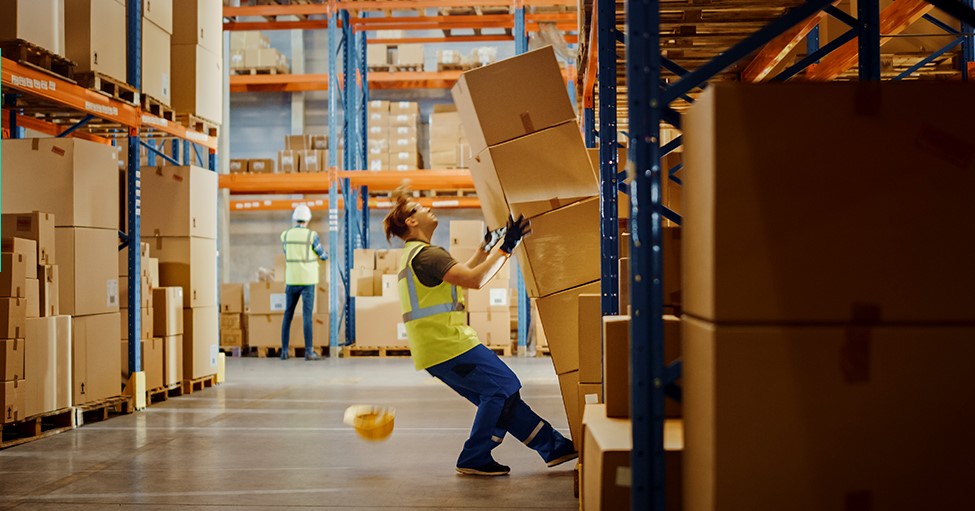According to Safe Work Australia, Australia’s manufacturing sector records 9.1 serious accident claims per million hours worked in 2019-20. That’s about 17 serious claims per thousand employees. In the year to 25 August, seven Australian manufacturing employees died in work accidents.
This article includes an overview of the most common workplace accidents, how to minimise the human impact of mishaps, and what cover you need to protect your business from financial claims.
Repetitive stress injuries
Repetitive stress injuries happen when factory workers:
- Repeat the same task
- Stay in the same position for long periods
- Use equipment that vibrates
- Overuse a particular muscle group.
Over time, this can lead to numbness, tingling or pain and eventually strains, soft tissue deterioration, and lost strength in that part of their body. In short, these repetitive stress injuries make it hard for them to continue doing their job.
Sprains and strains
Repetitive strain injuries are also about overexertion as well as manual handling. In factory work, this often happens in the shoulders, joints, back, and knees, making movement intensely painful.
Consider these nine biomechanical demands you may be placing on your workers, hence raising their injury risks:
- Carrying or lifting heavy loads
- Repetitive hand or arm movements
- Working while bending their body forward
- Working with their hands raised above their head
- Working while sitting down
- Squatting or kneeling when working
- Pushing, pulling or using some force
- Work standing in one place.
Such work-related injuries often need time, physical therapy, and, sometimes, surgery to heal. This resource about principles of good work design is useful.
Body stressing comprised 37% of serious workplace injury claims made in 2019-20, says Safe Work Australia, which offers this breakdown:
- Traumatic joint/ligament and muscle-tendon injury (38%)
- Musculoskeletal and connective tissue diseases (18%).
Slips and falls
Spilled oils and other liquids can be common in the manufacturing process. This raises the risk of slips, trips and falls. Without a daily cleaning program and safety protocol for cleaning spills as they happen, your factory could face serious staff injuries, including:
- Broken bones
- Spinal injuries
- Sprains
- Traumatic head injuries
- Fatalities.
Slips, trips and falls accounted for 23% of serious workplace injury claims in 2019-20, according to the most recent Safe Work Australia figures.
Hearing loss
Each state and territory has differing regulations for noise exposure limits in workplaces, but the danger bandwidth is from 85 to 140 decibels. Check out this online tool to see how increased volume affects the safe exposure time.
Chances are you already give your staff PPE, such as ear muffs or plugs, to protect against hearing damage. However, they could still suffer inner-ear damage if a sudden crash or explosion occurs.

